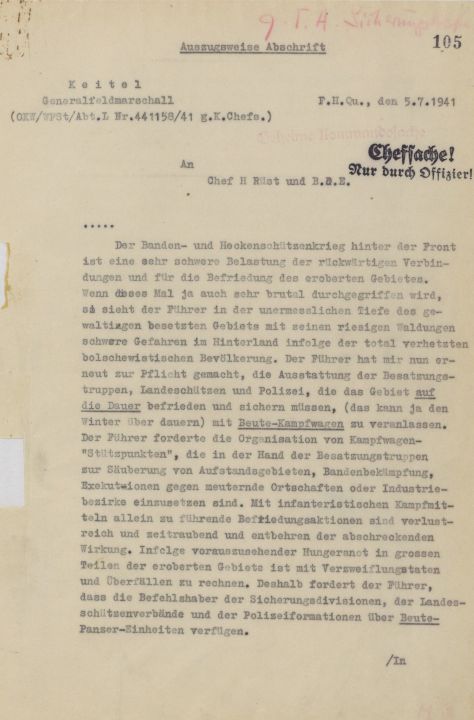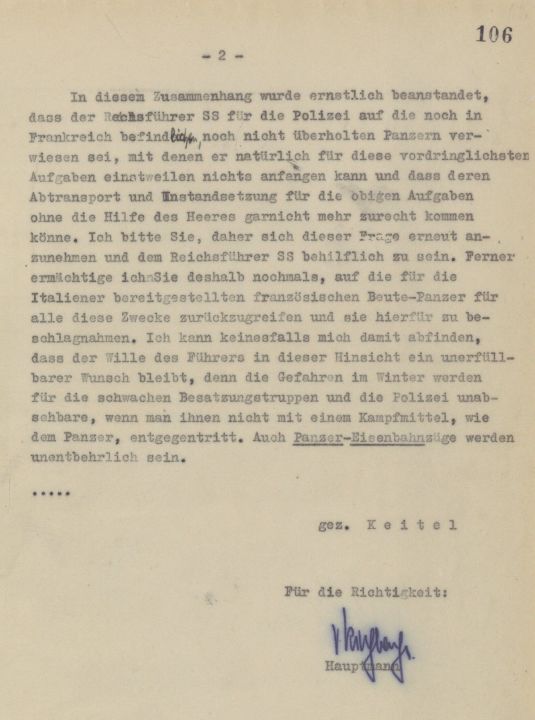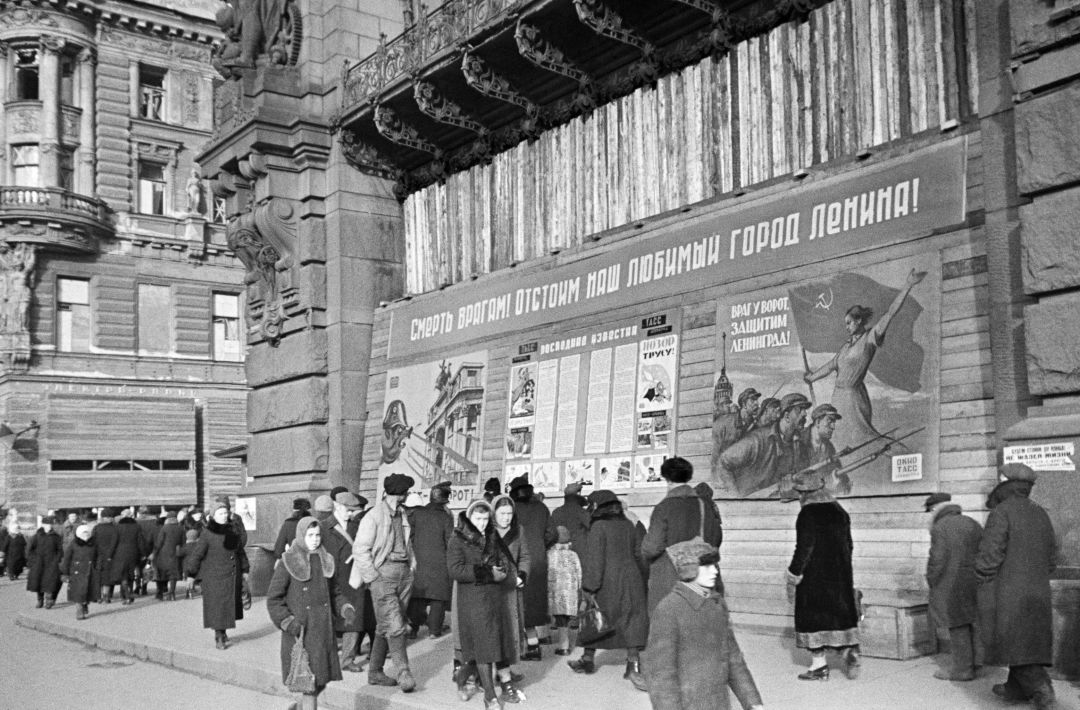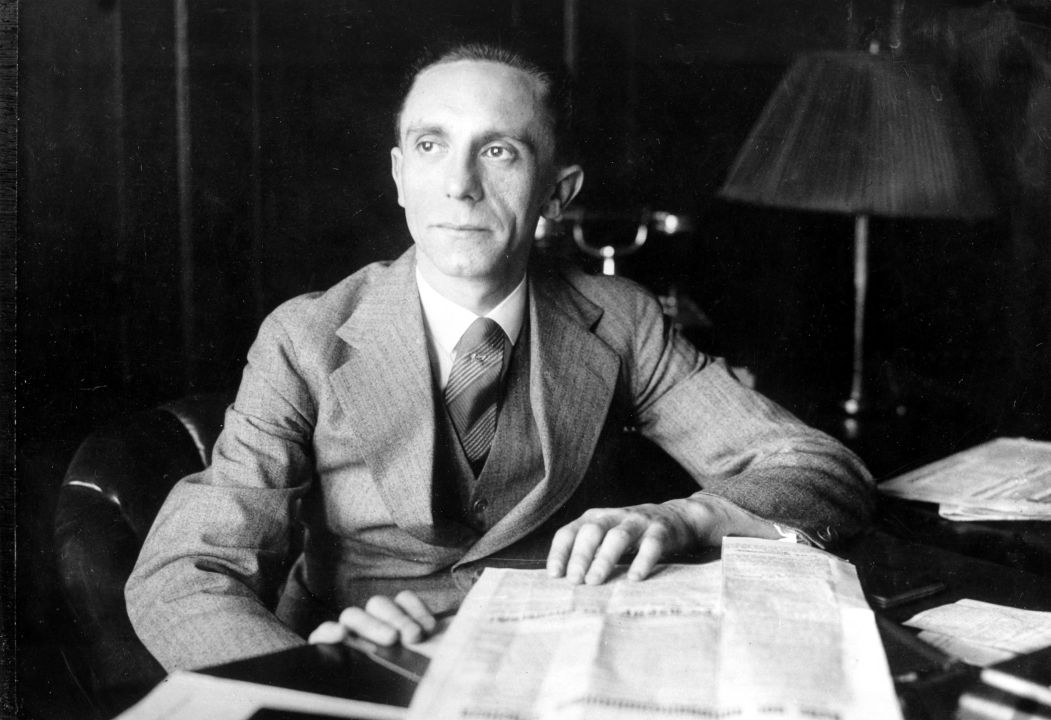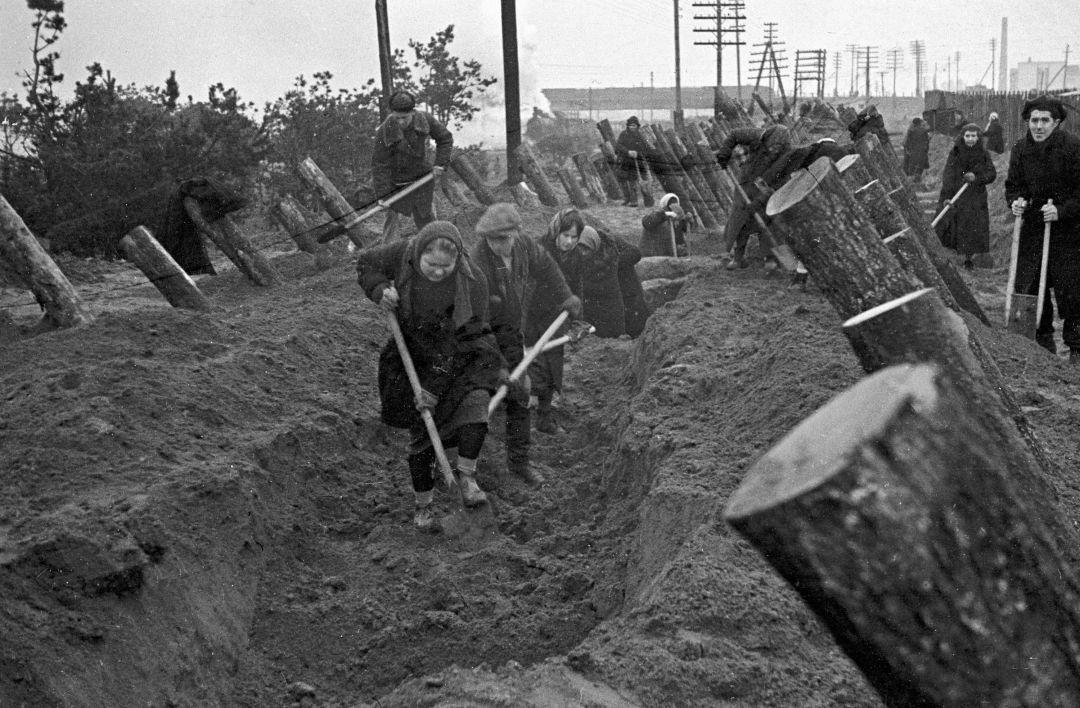“Nuremberg. Casus Pacis”, the Eurasian People’s Assembly cooperated with the president of the Digital History Foundation, the historian and researcher Egor Yakovlev, to create the documentary cycle “Genocide. Reich’s plan”. The Third Reich documents are being published in Russian for the first time and prove irrefutably that the Nazis’ crimes cannot be excused simply as excesses which occasionally occur in wartime or the private acts of a handful of unspeakably cruel people. The blockade of Leningrad, along with the mass executions in occupied territories and the extermination of prisoners of war, as well as the medical experiments in castration and sterilisation in concentration camps, were all a well-planned and concerted attempt to destroy Soviet ethnicity. Today we publish the first package of documents which shed light on Germany's true intentions towards the civilian population of the European part of the USSR: to kill up to 30 million people through artificially created starvation and unbearable living conditions.
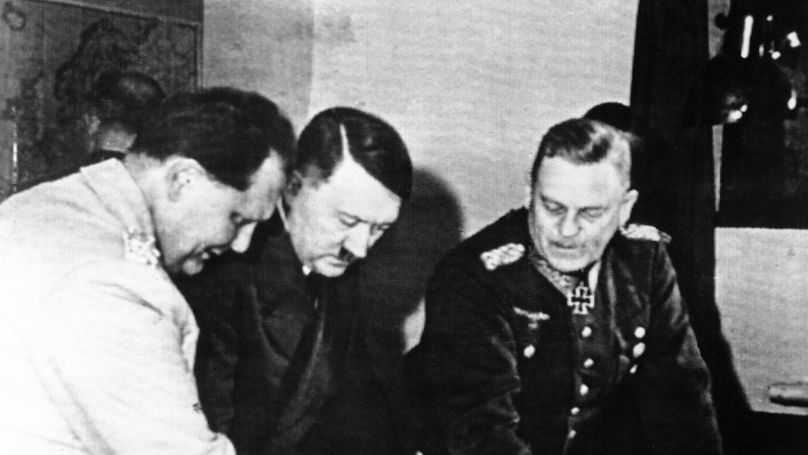
Fifth point
The UN Convention “on the Prevention and Punishment of the Crime of Genocide” was adopted on 9 December 1948, when the atrocities perpetrated by the Nazis were still fresh in everyone’s mind, and it entered into force on 12 January 1951. In the convention, the official definition of genocide is taken to be any of the following acts committed with intention of destroying, in whole or in part, a national, ethnical, racial or religious group:
- Killing members of the group;
- Causing serious bodily or mental harm to members of the group;
- Imposing measures intended to prevent births within the group;
- Forcibly transferring children of the group to another group;
- Deliberately inflicting on the group conditions of life calculated to bring about its physical destruction in whole or in part.
Although the Nazis’ actions towards ethnic Soviets encompass all five descriptions of genocide, the last one is particularly important. As the documents show, just before the invasion of the USSR, the Third Reich believed that the best way to clean out the “living space” was to create unbearable living conditions for the “subhumans” from the East.
Göring: Will they die? That`s a good thing
On 23 May 1941, an analytical note by the Generalplan Ost economic headquarters was published. It was a plan for the total plunder of Soviet territories during the Nazi occupation*. Its main author was Herbert Backe, the Third Reich’s minister of Food and Agriculture. He was a native of Batumi in Georgia and was considered a specialist in Russia’s agrarian economy. Backe’s plan was to dismantle completely the food chains between the fertile Soviet regions in the south and the industrial consumer regions in Central Russia. According to Backe, all captured food and raw materials should be commandeered immediately for the use of the Wehrmacht and German citizens, who were on the verge of crisis because of the British naval blockade. Backe cynically described what effect this would have on the Soviet population:
“Many tens of millions of people will become redundant in this area and will either die or have to immigrate to Siberia. Attempts to rescue the population there from death through starvation by obtaining surpluses from the black earth zone[…] prevent the possibility of Germany holding out till the end of the war(...) Market regulation and the allocation of products for this region are not to be considered because it would mean that the German administration had some kind of obligation to the population. Such claims are excluded in advance(...) The consequence of this will inevitably be the extinction of both industry and the majority of the population in the former consumer regions.”
According to Backe's calculations, after the Nazis successfully brought the war to an end in the winter of 1941-1942, between 20 million and 30 million people would have died of famine in the USSR’s former territories.
All the Third Reich’s top leaders applauded this plan. So, after a conversation with Backe on 10 June 1941, Heinrich Himmler went to a meeting at Wewelsburg Castle and declared before the SS high command that the goal of the campaign to the East was to reduce the number of Slavs by 30 million**. General Erich von dem Bach-Zelewski, when asked about this after the war, clarified that Himmler meant not just the Slavs but also the Jews, and among other things expected their death would be by starvation.
Hermann Göring, head of the Generalplan Ost economic headquarters, official successor to the Führer, expressed himself even more brutally. In November 1941, he bluntly told Italy’s Foreign Minister Galeazzo Ciano:
“This year between 20 million and 30 million people will starve to death in Russia. And maybe that's a good thing, because certain peoples have to be destroyed.”
Alfred Rosenberg, head of what was to become the Ministry for the Eastern Territories, was well aware of what consequences pillaging Russia of its food would have: on 20 June he told his subordinates, “At the present time, the nutritional needs of the German people are undoubtedly the most pressing concern for Germans in the East, and the southern regions and the North Caucasus will have to make good the depredations the German people are suffering. We absolutely deny any obligation to feed the Russian people from these surplus areas. We know this is a harsh necessity that is devoid of any feeling. A large evacuation will undoubtedly be the result and Russia will certainly face very difficult years."
This quotation is largely a reiteration of a passage from the 23 May document of 23 May; but whereas Backe spoke with brutal forthrightness about the extinction of millions, Rosenberg clouded the issue with such euphemisms as "evacuation" and "difficult years".
Hitler: thinning of the native population
Blockades of large Soviet cities in the fertile zone were to be one of the ways to cause hunger. Had the Nazis occupied such large metropolitan areas, they would have been obliged to feed the inhabitants of the conquered cities, and since – so far as the Nazis were concerned – the inhabitants were scarcely human, it was decided that they didn’t deserve feeding. Therefore, the German command decided against occupying Soviet cities, planning instead to surround them and, with the aid of the artillery and air force, deny them any supplies, condemning the population to death from hunger and cold.
In September 1941, during a conference about managing the Wehrmacht’s military economy and armaments under the leadership of Göring, it was stated that: “For economic reasons, storming large cities is undesirable. It is preferable to blockade them.”
The Führer himself spoke more openly to his underlings: “Native population? We will thin them out(...) We will not enter Russian cities; they must be destroyed completely. And we do not need to be tormented by remorse at all: our job is not to care for these people - we have no obligations to these people.”
These plans, at least so far as Moscow and Leningrad were concerned, were already being voiced in diplomatic and military circles by the summer. On 24 June 1941, Göring told Finland’s ambassador to Berlin, Toivo Kivimäki, that "Leningrad as well as Moscow should be destroyed". The fact that the leaders of the Third Reich were contemplating the destruction of the cities as well as their populations, is proved by an entry on 8 July in the diary of Franz Halder, the Wehrmacht’s chief of staff:
"The Führer's firm decision is to raze Moscow and Leningrad to the ground to prevent their inhabitants - whom we would have to feed in the winter - from staying in them."
***
The above documents are being published in Russian for the first time (except for Document 4 which has already been quoted the journalist Lyubov Chernaya’s book "The Empire of Death. The Apparatus of Violence in Nazi Germany” – although the translation contains some serious inaccuracies), and they broaden our understanding of the Nazis’ famine plans.
The first document in this compilation shows that the Nazis were seriously expecting the exhausted population to stage some sort of resistance and they prepared to suppress hunger riots, even mobilizing tanks. The rest of the documents show that the Army Group Centre was banking on its blockades of Leningrad, Moscow and other large cities to bear fruit: on 12 September, Hitler gave an order that the surrender of the Soviet capital should not in any way be accepted. Being confident of victory, the head of the Nazis discussed his plans openly.
These materials prove the thesis that Hitler and his henchmen planned to destroy the Soviet people "in whole or in part", and therefore were intending genocide by any definition.
Sources:
*The document "Directives on economic policy" for Generalplan Ost Economic Headquarters of the “Agriculture” group, published by the International Military Tribunal. Trial of the Major War Criminals. Official text, English edition, Nuremberg 1947/49. Vol. XXXVI, 126-EC.
** Meeting of SS Reichsführer Himmler with the leadership of the SS in Wewelsburg Castle. Excerpts from the testimony of Erich von dem Bach-Zelewski at the Nuremberg Trials (7 January 1946). Published: Der Prozeß gegen die Hauptkriegsverbrecher vor dem Internationalen Militärgerichtshof Nürnberg 14. November 1945 – 1. Oktober 1946. Amtlicher Wortlaut in deutscher Sprache. Digitaltext bei Zeno.org
(The trial of the main war criminals before the International Military Tribunal in Nuremberg, 14 November 1945 to 1 October 1946 – Official wording in German).
By Egor Yakovlev





